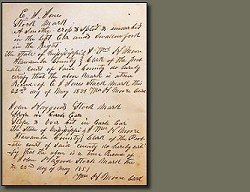 It has been written that folk art describes a wide range of objects that often reflects the craft traditions and social values of various social groups. To me, pieces of such art are simply treasured gifts from the heart. Itawamba County, Mississippi has produced folk artisans for generations. From basket making, pottery and painting to weaving, wood carving and quilting, those artists who produced such work were simply living treasures.
It has been written that folk art describes a wide range of objects that often reflects the craft traditions and social values of various social groups. To me, pieces of such art are simply treasured gifts from the heart. Itawamba County, Mississippi has produced folk artisans for generations. From basket making, pottery and painting to weaving, wood carving and quilting, those artists who produced such work were simply living treasures.Over the years while visiting the different parts of the county, I have collected such items made from the heart and the hand. In many instances these items served not only as an artistic expression, but a utilitarian purpose as well.
Years ago I was photographing an old log pioneer structure in the hills of eastern Itawamba County and noticed at a house nearby, an elderly man was busily whittling on a piece of wood. Upon closer inspection I realized he was carving a cypress knee from the nearby swamplands. His workspace was covered with cypress knees yet to be transformed. Sitting in the shade, it was a remarkable experience listening to him talk and watching his hands carve away at the cypress wood transforming the raw wood into his carved characters as the wood shavings fell to the ground like confetti at a party. Upon leaving, he gave me one of his completed pieces – a colorful character in a green dress.
Back years ago I always enjoyed visiting an elderly gentleman who repaired ladder-back chairs in his community. It was a craft that had been handed down from grandfather to father to grandson. In addition to caning chairs, he also produced the most beautiful baskets from the split oak strips. I would watch as he tediously wove the oak strips into baskets of all sizes and listen to his stories of the olden days. Today I cherish several of his baskets and they are just as strong today as they were the day they were given to me – more than thirty years ago.
Itawamba County has always been known for her folk potters. Since the 1800’s the countryside boasted scores of small pottery operations. As a child I remember the Harris Pottery works atop River Hill at Peppertown. I was always amazed watching the potter produce beautiful churns, crocks, and flower pots from the raw clay of Itawamba County’s hills as he sat at the potter’s wheel. Today I cherish a little flower pot my mom bought from Harris Pottery nearly fifty years ago.
There have always been wood carvers in the county producing all types of wooden wares including trays, sculptures, bowls and vases. One of my prized possessions is a wooden vase that was given to me during my youth by a local wood carver. The rich colored rings of the wooden vase is a testament to the artistic ability of the craftsman.
Today many of those self-taught artisans I have had the pleasure to know and bond a friendship with are gone, but their works remain. I treasure all those folk art items I have from the beautiful hills of Itawamba County, Mississippi. They are more than just pieces to admire. To me they represent genuine gifts from the heart and hand, and each little item tells a story that thousands of words simply cannot tell.
Written for the 55th Edition of the Carnival of Genealogy hosted by Creative Gene.







































